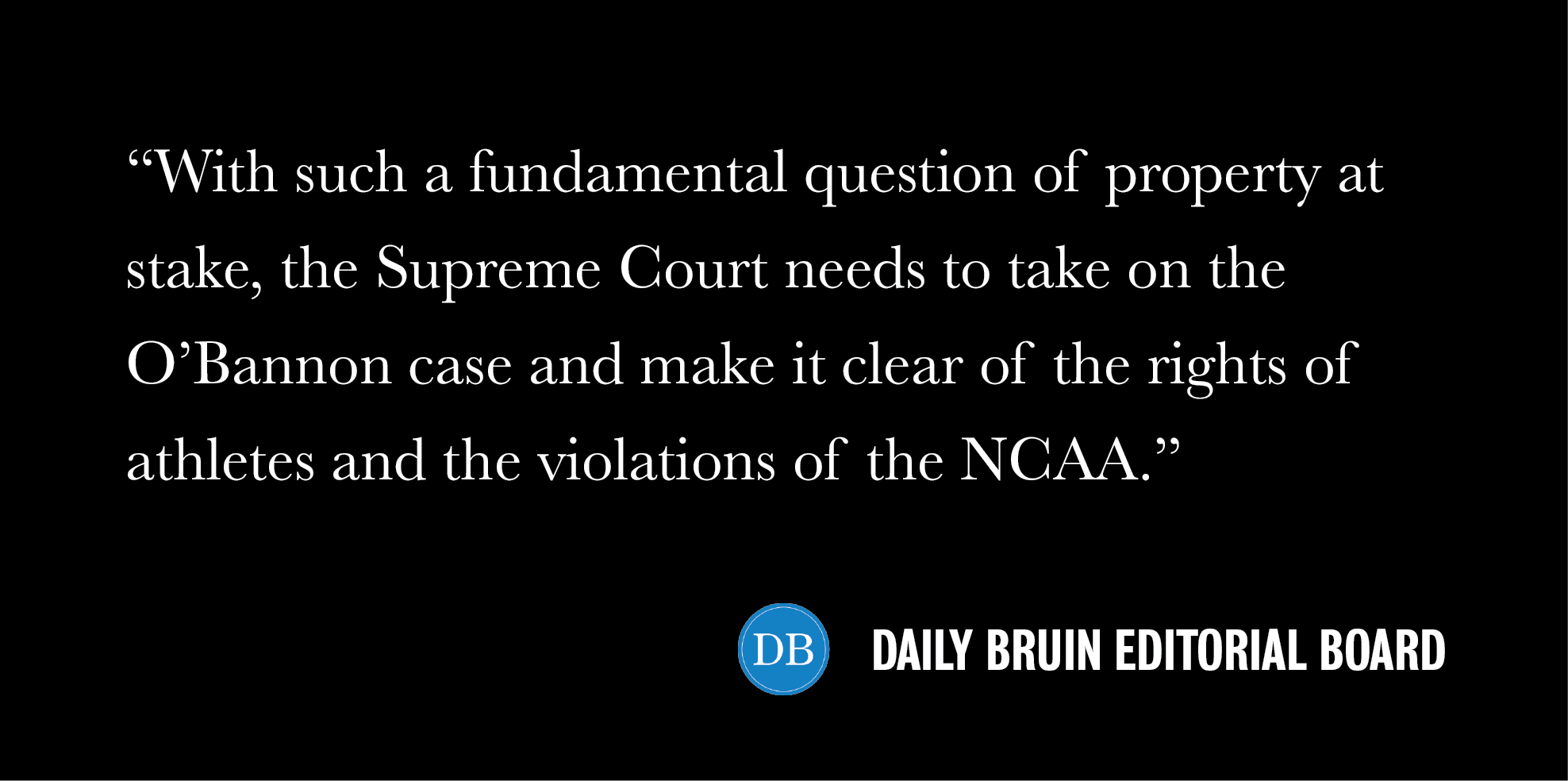Editorial: Supreme Court must hear O’Bannon case, secure athletes’ right to own image

By Editorial Board
Oct. 2, 2016 3:17 p.m.
The ball is now in the U.S. Supreme Court to decide the amateur status of collegiate athletes.
Among the thousands of petitions set to go in front of the eight current justices over the coming weeks – each petitioner hoping for a hearing with the nation’s highest court – only one case brings with it the ability to begin dismantling some of the injustices facing collegiate athletes: the Ed O’Bannon case.
Formally known as O’Bannon v. NCAA, the case brings forth the debate of whether collegiate athletes have a right to their images and likenesses. It would be wise to take the case in its upcoming term and not shy away from taking a potentially controversial stance.
[Related: NCAA needs to value student-athletes’ work, not just their own worth]
It’s clear from the national push and pull from college athletes and the NCAA over athlete compensation that there remain great confusion and controversy over the NCAA’s amateurism rules.
The O’Bannon legal battle, originated by former UCLA basketball player Ed O’Bannon in 2009, centers on the debate of amateurism – specifically whether the NCAA violates antitrust laws in its compensation for college athletes and if it can continue to ban players from making money off their own names, images and likenesses.
Over the years, the case has slowly worked its way up the federal courts. Most recently, a September ruling from the U.S. Court of Appeals for the Ninth Circuit affirmed a lower court decision that NCAA rules violate antitrust laws. However, the panel went on to limit O’Bannon’s victory by eliminating a district judge’s decision to allow programs to provide college athletes deferred compensation up to $5,000 per year – a move that set athletes back in their fight for fair pay.
The split appellate court ruling led both sides to petition to the highest court, for markedly different reasons. The NCAA wants the Supreme Court to further protect amateurism by reaffirming its 1984 NCAA v. Board of Regents of University of Oklahoma ruling. On the other side, O’Bannon’s lawyers want the court to confirm that the NCAA places an unreasonable restraint of trade on athletes, and open the door for a player to make money off his or her name, image and likeness.
[Related: It’s time the NCAA gives athletes the right to their own images]
With such a fundamental question of property at stake – whether athletes have a right to what is innately theirs – the court needs to take on the O’Bannon case and make it clear of the rights of athletes and the violations of the NCAA.
Certainly, the Supreme Court approves a miniscule number of cases for hearings – often less than a percent of those that are petitioned – but the consequences of not hearing this case are clear. If the court declines the opportunity, it will reaffirm the Ninth Circuit’s conflicting ruling that continues to provide insufficient compensation for athletes, who are used to secure, lucrative broadcasting deals and provide for the paychecks of department administrators.
While the O’Bannon lawsuit is not the only case challenging the NCAA’s vast control over its athletes, it is the sole case challenging the status quo where college athletes are deprived the rights to their own likenesses and taken advantage daily.
And with so much riding on this case, it’s clear the Supreme Court needs to step up to the plate and take its swing.


